Patrington, East Riding of Yorkshire
Up to 1834
Parish poorhouses existed at Patrington by 1743, with two new ones being built in 1827. A workhouse was opened in 1807 and was also used by Winstead. The workhouse inmates were hired out for use as farm labour.
The parish of Paul had a house for the use of the poor bequeathed by its vicar Willam Jones (1690-1723). Thorngumbold had a poorhouse by 1743 while Burstwick was operating a workhouse by 1764.
Paul, Keyingham, Ryhill and Thorngumbald formed a Gilbert Union in 1820 and operated a workhouse at Keyingham. However, Pigot's Directory of 1829 recorded that Paul had its own workhouse in operation with a governor named Liddle. Ryhill cum Camerton was also contributing to the Paul workhouse by the 1820s, with Burstwick cum Skeckling joining them by 1831. Keyingham had poorhouses in use by 1823 but was another contributor to the Paul workhouse.
After 1834
Patrington Poor Law Union was formed on 23rd September 1836. Its operation was overseen by an elected Board of Guardians, 26 in number, representing its 25 constituent parishes as listed below (figures in brackets indicate numbers of Guardians if more than one):
East Riding:
Ryhill cum Camerton, Easington, Halsham, Hilston, Holmpton, Hollyn, Keyingham, Kilnsea, Ottringham, Out Newton, Owstwick, Owthorne, Patrington (2), Paghill or Paul, Rimswell, Roos, Skeffling, South Frodingham, Sunk Island, Thorn Gumbold, Tunstall, Waxholme, Welwick, Winestead, Withernsea.
Later Additions (from c.1837): Burstwick cum Skeckling, Burton Pidsea.
The population falling within the union at the 1831 census had been 7,318 with parishes ranging in size from Hilston (population 43) to Patrington (1,298). The average annual poor-rate expenditure for the period 1834-6 had been £3,689 or 10s.1d. per head of the population.
Patrington Union workhouse was built at a site on Station Road in 1837-8. It was an rectangular brick structure accommodating 120 inmates. In 1902-3, an 18-bed infirmary block was erected at the south of the site at cost of £2,000. It contained four wards and two day rooms and was opened in March, 1903, The site location and layout are shown on the 1910 map below.
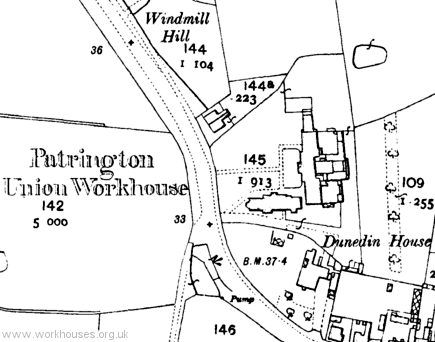
Patrington workhouse site, 1910.
From 1872 to 1894, the Rural Sanitary Authority held their meetings at the workhouse, with its successor, the Rural District Council, continuing the practice until 1935.
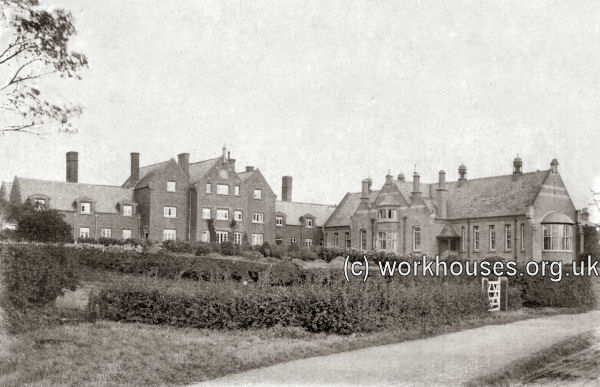
Patrington workhouse from the north-west, early 1900s.
© Peter Higginbotham.
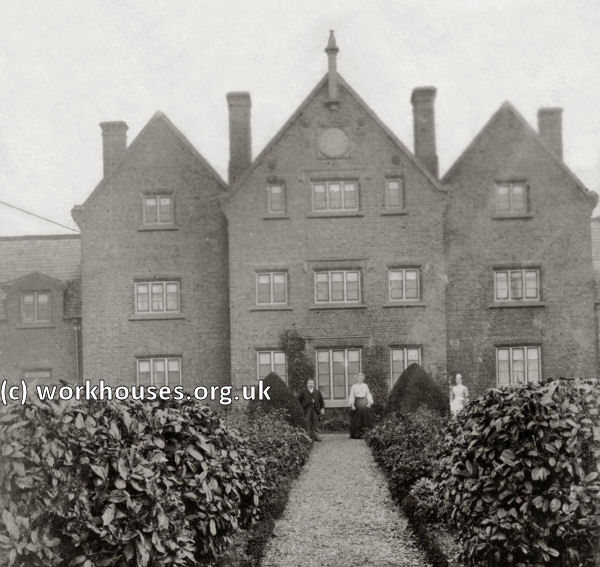
Patrington workhouse from the west, early 1900s.
© Peter Higginbotham.
From 1900 to 1923 the master and matron the workouse were William Gardside, and his wife Sophia. Below is a detail from the above which includes what are presumably the Garsides.
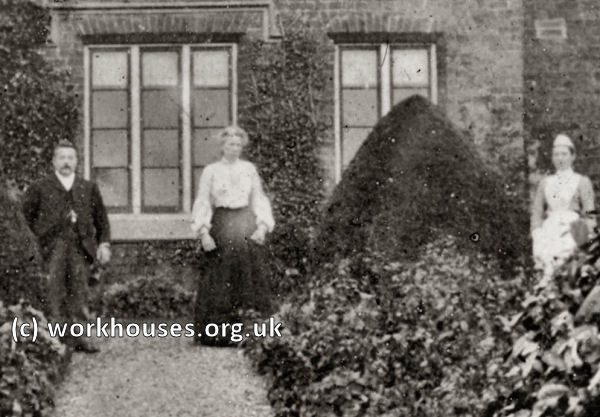
Mr and Mrs Garside at Patrington workhouse, early 1900s.
© Peter Higginbotham.
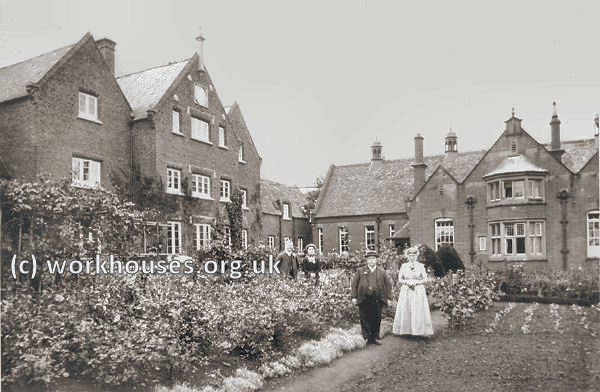
Patrington workhouse, early 1900s.
© Peter Higginbotham.
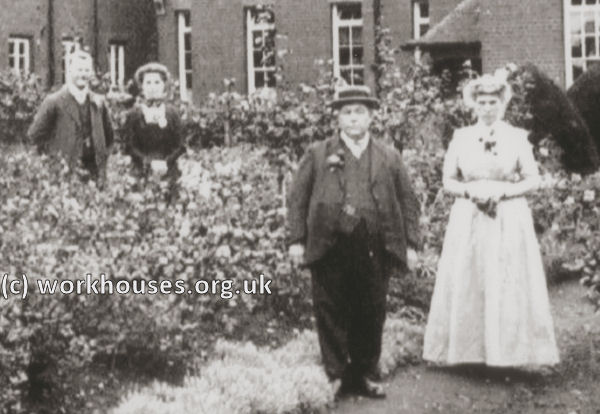
Patrington workhouse, early 1900s.
© Peter Higginbotham.
On 15 February 1917, the workhouse was taken over for military purposes and the then inmates (eleven men and eleven women) were transferred to Hull workhouse, only returning four years later in February 1921.
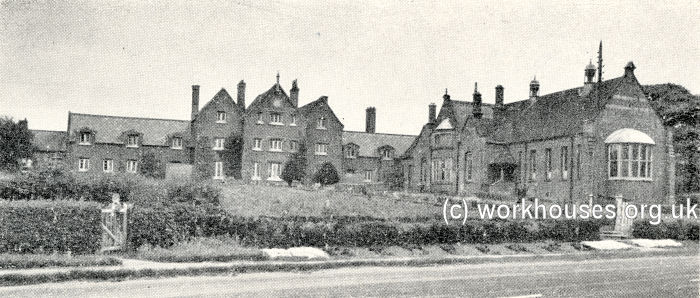
Patrington workhouse from the west, c.1920s.
© Peter Higginbotham.
The establishment was finally closed on 18th January 1947. The building was later used as a factory but was demolished in 1981.
Staff
Inmates
Records
Note: many repositories impose a closure period of up to 100 years for records identifying individuals. Before travelling a long distance, always check that the records you want to consult will be available.
- East Riding of Yorkshire Archives and Local Studies, The Treasure House, Champney Road, Beverley HU17 9BA . Few records survive — holdings include: Pauper offence book 1847-98; Births and deaths register 1914-47; etc.
Bibliography
Links
Unless otherwise indicated, this page () is copyright Peter Higginbotham. Contents may not be reproduced without permission.


